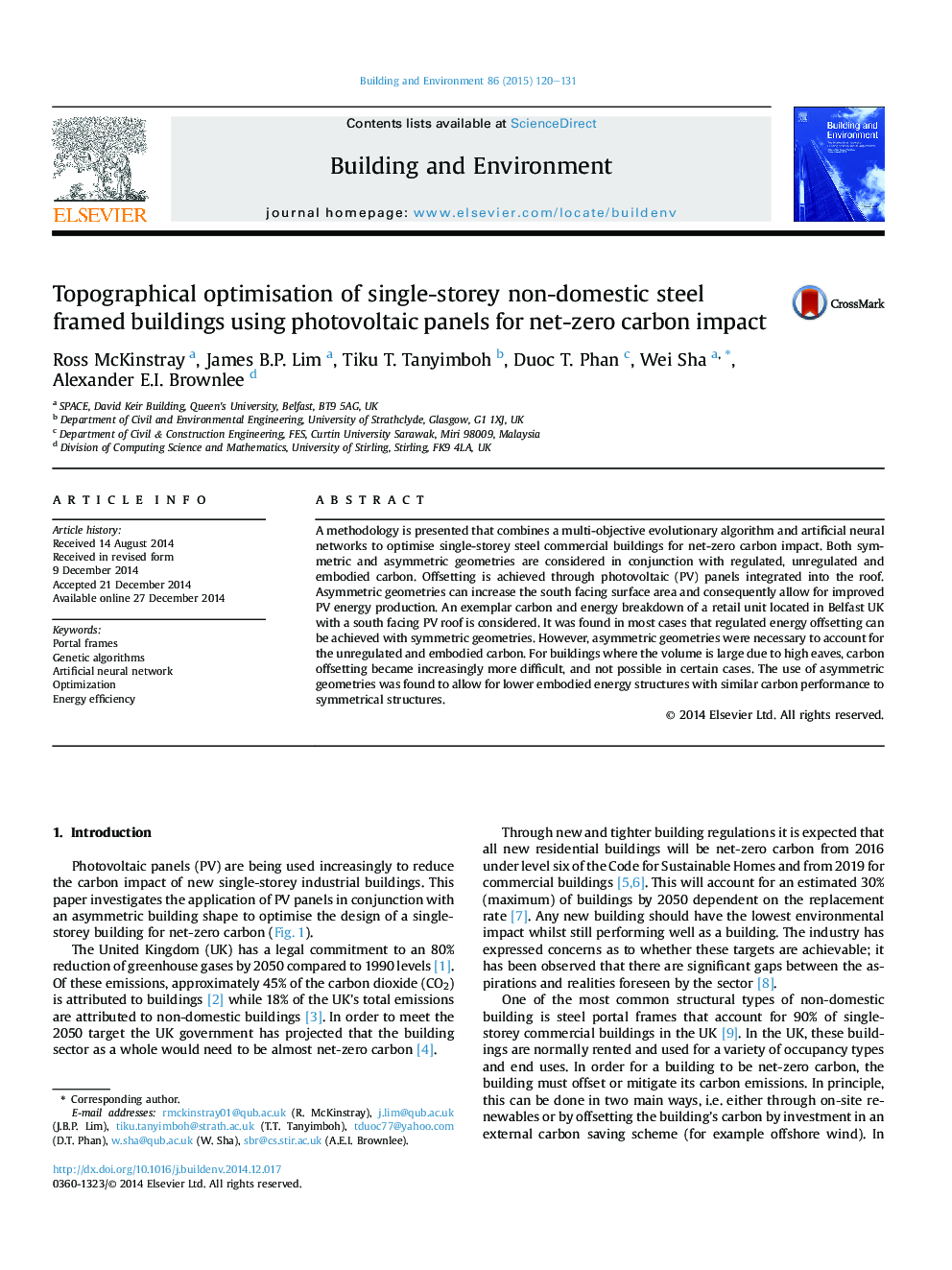| Article ID | Journal | Published Year | Pages | File Type |
|---|---|---|---|---|
| 248058 | Building and Environment | 2015 | 12 Pages |
•Optimisation based on a combination of neural networks and evolutionary algorithm.•Selected buildings with different midpoint configurations with zero carbon impacts.•Regulated energy could be offset with minimal asymmetry.•With operational energy included the structures could be offset with asymmetry.•This method could be expanded to include more building locations and orientation.
A methodology is presented that combines a multi-objective evolutionary algorithm and artificial neural networks to optimise single-storey steel commercial buildings for net-zero carbon impact. Both symmetric and asymmetric geometries are considered in conjunction with regulated, unregulated and embodied carbon. Offsetting is achieved through photovoltaic (PV) panels integrated into the roof. Asymmetric geometries can increase the south facing surface area and consequently allow for improved PV energy production. An exemplar carbon and energy breakdown of a retail unit located in Belfast UK with a south facing PV roof is considered. It was found in most cases that regulated energy offsetting can be achieved with symmetric geometries. However, asymmetric geometries were necessary to account for the unregulated and embodied carbon. For buildings where the volume is large due to high eaves, carbon offsetting became increasingly more difficult, and not possible in certain cases. The use of asymmetric geometries was found to allow for lower embodied energy structures with similar carbon performance to symmetrical structures.
